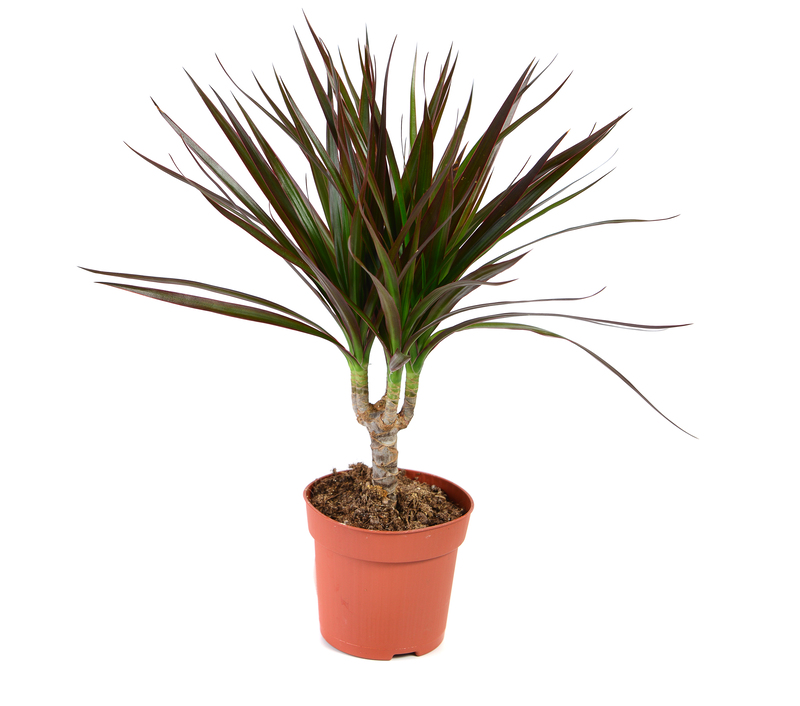Gardening hacks to deal with troublesome winds
Posted on 05/06/2025
Gardening Hacks to Deal with Troublesome Winds
Wind can be both a gardener's ally and adversary. While a gentle breeze can help plants by strengthening stems and discouraging fungal diseases, troublesome winds can wreak havoc in your garden, snapping delicate stems, uprooting young plants, and even stripping leaves. If you're battling with unpredictable gales or enduring constant blustery conditions, you need reliable gardening hacks to deal with troublesome winds. Explore our comprehensive guide for expert tips, creative solutions, and actionable ideas to shield your plants and secure a flourishing landscape.
Understanding the Impact of Wind on Gardens
Before diving into windproof gardening tips, it's crucial to understand how strong breezes affect your green space.
- Physical damage: High wind speeds can break fragile stems, uproot newly planted seedlings, and cause structural problems for trellises and supports.
- Increased evaporation: Wind dries out the soil and foliage. This can lead to water stress for your plants, especially during hot weather.
- Temperature fluctuations: Gusty conditions can expose plants to chilling winds or even frostbite, especially in open locations.
- Pest and disease spread: Wind can carry pests and diseases across your garden, infecting previously healthy plants.

Top Gardening Hacks for Windy Gardens
Let's dive into actionable strategies to help you master gardening in windy conditions.
1. Creating Effective Windbreaks
Establishing windbreaks is one of the most effective ways to combat troublesome winds. A good windbreak doesn't just stop wind--it slows it down, protecting your plants from direct force and reducing overall garden stress.
- Hedge rows: Planting dense, multi-layered hedges such as boxwood, holly, or privet along the edge of your plot can filter and diffuse wind, rather than blocking it completely and causing damaging eddies.
- Mixed shrub borders: Choose a variety of heights, foliage densities, and species to create a more natural, resilient windbreak.
- Living fences: Fast-growing species like bamboo or Leyland cypress offer rapid protection, but ensure they are suitable for your climate and soil.
- Temporary barriers: Use hessian, shade cloth, or even recycled pallets as short-term solutions in exposed areas.
When building a windbreak, remember: For best results, windbreaks should be semi-permeable--about 50-60% solid--to allow wind to pass through at reduced speed instead of creating turbulence behind a solid wall. A windbreak should ideally extend 5-10 times its height for maximum shelter.
2. Planting the Right Varieties
Some plants are more resilient to gales than others. By choosing the best wind-resistant plants for your area, you instantly minimize wind damage.
- Low-growing perennials: Species like lavender, thyme, and sedum stay close to the ground and are less likely to be battered by gusts.
- Flexible stems: Plants such as ornamental grasses and dogwood can bend without breaking, making them ideal for windy spots.
- Tough-leafed shrubs: Escallonia, griselinia, and oleaster have waxy, robust leaves suited for wind-exposed gardens.
- Wind-tolerant trees: Hawthorn, rowan, and pine species defend themselves with tough foliage and flexible branches.
Whenever possible, group your most delicate plants in the most sheltered locations, behind natural or artificial barriers.
3. Smart Garden Design for Windy Conditions
Your garden layout makes a significant difference in how wind moves through and affects your plot. Try these clever design hacks for wind-exposed gardens:
- Stagger planting: Don't line up rows in the path of dominant winds. Instead, stagger them so there are no straight wind tunnels.
- Terracing: Raised beds or terraces reduce wind speed at lower levels and help retain soil moisture.
- Use fences thoughtfully: Picket fences or slatted panels offer protection without causing damaging wind eddies, unlike solid fences.
- Position structures carefully: Use sheds, greenhouses, or pergolas as windbreaks for vegetable patches or flower beds.
4. Securing and Supporting Plants
For newly planted trees, tall perennials, or tomatoes, providing secure supports is essential in windy conditions.
- Staking: Use sturdy stakes and soft ties to anchor saplings and keep them upright. Position the stake on the windward side for maximum effect.
- Cages and frames: Tomato cages, pea frames, or bamboo teepees help support top-heavy or vining vegetables.
- Netting: Fine mesh netting can give low crops extra stability without blocking too much light or airflow.
- Mulch: A thick layer of organic mulch at the base of plants helps trap moisture and holds seedlings in place.
5. Managing Soil Health and Watering Wisely
Windy sites are prone to rapid soil drying. Combat this with responsible watering and soil health hacks:
- Add organic matter: Incorporate compost or well-rotted manure to improve soil's water-holding capacity and resilience.
- Water deeply: Shallow, frequent watering encourages shallow roots that are easily damaged by wind. Water deeply but less often to promote robust root systems.
- Mulch generously: Mulch acts as a barrier, preventing evaporation and helping maintain even moisture levels.
- Windbreak trees or cover crops: Planting cover crops like clover or rye can help reduce bare soil exposure and minimize erosion.
6. Creative DIY Wind Solutions
Don't worry if you don't have space or budget for a full hedge or fence. Try these DIY wind protection hacks:
- Recycled materials: Old palettes, woven willow, or upcycled doors can create quick, budget-friendly wind barriers.
- Wattle fencing: Interwoven sticks or branches build rustic, effective windbreaks for smaller beds or plots.
- Plastic bottle cloches: Cut large plastic bottles in half and use them to shield seedlings from gusts.
- Horticultural fleece: Lightweight fleece can be wrapped over vulnerable plants during stormy spells.
Expert Tips for Gardening in Windy Areas
- Observe and adapt: Spend time watching how wind moves through your garden before planting. Notice sheltered spots or swirling eddies to make informed choices.
- Layer your defenses: Combine living and man-made windbreaks for the best results. Hedges with a low fence or mesh netting can work wonders.
- Prune strategically: Keep trees and shrubs well-pruned so wind can pass through, minimizing damage.
- Anchor containers: Weigh down pots with rocks or bricks in the base, or group them together in a sheltered corner.
- Rotate crops: Regularly shift the position of sensitive crops to prevent long-term wind exposure.
Best Plants for Windy Gardens
Choosing wind-hardy plants will boost your garden's resilience. Here are our top recommendations:
- Ornamental grasses - Miscanthus, Panicum, and Cortaderia
- Low-growing herbs - thyme, oregano, sage
- Tough-perennial flowers - Crocosmia, echinops, coreopsis
- Salt and wind-tolerant shrubs - escallonia, euonymus, oleaster
- Native trees - Consider local species that have evolved with prevailing winds in your area.
Additional Tricks for Tackling Troublesome Winds
For persistent problem areas, try these fast-acting gardening wind hacks:
- Windbreak netting: Purchase specialist garden windbreak netting and set it up along the windward side of your property.
- Moveable screens: Place screens on wheels or hinged panels to quickly adapt your garden for unexpected gales.
- Climbing plants as living shields: Train ivy, honeysuckle, or clematis up trellises to form a flexible green barrier.
- Grow in containers: For the windiest spots, grow plants in pots so you can move them when storms threaten.
Common Mistakes to Avoid When Gardening in Windy Conditions
Beware of these pitfalls that gardeners frequently encounter in windy environments:
- Solid fences without gaps: These can create damaging turbulence; use slatted or mesh designs instead.
- Overcrowding windbreaks: Hedges planted too closely don't grow as vigorously or filter wind as effectively as staggered, well-spaced rows.
- Ignoring soil erosion: Failing to mulch or plant cover crops on exposed soil may lead to loss of valuable topsoil.
- Neglecting regular maintenance: Windbreaks, supports, and fences need routine checks--loosened ties, damaged mesh, or fallen branches all need quick action.
- Forgetting microclimates: Even in windy regions, sheltered corners exist. Find and use them for nurturing sensitive or rare plants.
Maintaining Your Wind-Proof Garden Year-Round
Once you implement your trouble-free gardening wind solutions, keep your garden healthy by:
- Inspect windbreaks and supports regularly, especially after storms.
- Refresh mulch at least twice a year to maintain moisture and stabilize soil.
- Trim hedges and prune trees to remove dead or damaged branches.
- Reposition portable barriers or containers based on seasonal wind directions.
Consistent care and flexibility are your greatest assets in a wind-exposed garden.

Frequently Asked Questions About Wind-Resistant Gardening
Can I create a windbreak if I have a small garden?
Absolutely! Use dwarf hedges, woven willow panels, or tall grasses in containers as compact windbreak solutions for balconies or small city plots.
What's the best time to plant a windbreak?
Early autumn or late winter is ideal, giving roots time to establish before the growing season and the worst weather.
Should I use fabric windbreaks or solid panels?
Semi-permeable fabrics are superior because they break up wind flow smoothly. Solid panels may cause turbulence and damage behind them.
How can I tell if plants are suffering wind stress?
Symptoms include brown leaf edges, stunted growth, broken stems, or leaves with holes and tears. The sooner you act, the quicker they recover.
Conclusion: Enjoy a Thriving Garden Despite the Wind
Don't let troublesome winds defeat your gardening ambitions! Use these hacks to design, plant, and maintain a resilient, beautiful garden that thrives even in the breeziest landscapes. Remember, with strategic planning, the right plant selection, and a little creativity, you can transform your windblown plot into a lush, protected haven. Embrace your site's natural conditions, invest in well-placed windbreaks and supports, and watch your outdoor paradise grow. Happy gardening!



